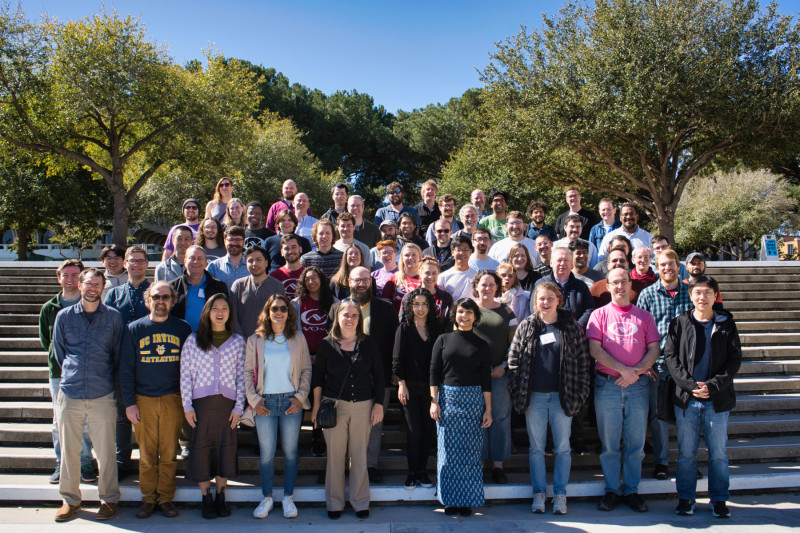In a new analysis, physicists provide the most precise picture yet of how neutrinos change 'flavor' as they travel through the cosmos.
Neutrinos are fundamental particles of the universe, but also some of the most elusive; They pass through everything and can be extremely difficult to detect. While many of their properties are mysterious, scientists know neutrinos come in three types: electron, muon, and tau.
 Understanding these different identities can help scientists learn more about neutrino masses and answer key questions about the evolution of the universe, including why matter came to dominate over antimatter in the early universe, said Zoya Vallari, an assistant professor of physics at The Ohio State University.
Understanding these different identities can help scientists learn more about neutrino masses and answer key questions about the evolution of the universe, including why matter came to dominate over antimatter in the early universe, said Zoya Vallari, an assistant professor of physics at The Ohio State University.
"The reason neutrinos are really, really fun is because they change their flavors," she said. "Imagine getting chocolate ice cream, walking down the street, and suddenly it turns into mint, and every time it moves, it changes again."
This phenomenon, called neutrino oscillations, can happen with neutrinos that are produced artificially by scientists and those that occur naturally. In an effort to better understand this shape-shifting behavior, the NOvA (the NuMI Off-axis νe Appearance) experiment in the United States and the T2K experiment in Japan, combined forces to shoot beams of neutrino particles over hundreds of miles and measure how their "flavor" changed throughout the journey.
Vallari, a leading member of the NOvA collaboration, is now building a team at Ohio State helping to develop a new neutrino detector, which is currently slated to come online at the end of the decade.
The study was recently published in Nature.
Despite having similar goals, the two experiments used different neutrino energies and studied oscillations over different distances. NOvA sent a beam of muon neutrinos from the U.S. Department of Energy's Fermi National Accelerator Laboratory near Chicago, Illinois, to a far detector in Ash River, Minnesota, and the T2K experiment sent muon neutrinos from the east coast of Japan across the country to a detector in the mountains of western Japan.
"While our goals were the same, differences in our experiment design adds more information when we pool our data together, in that the sum is more than its parts," said Vallari.
While this study builds on previous work that found tiny, but still very consequential, differences in neutrino mass for each type, researchers sought deeper hints that neutrinos operate outside the standard laws of physics. One such question is whether neutrinos and their antimatter counterparts behave differently, a phenomenon called Charge-Parity violation. If future data confirms that they do, researchers would be closer to discovering how the universe became mostly matter, rather than being wiped out by antimatter after the Big Bang.
While these findings don't definitively answer what role neutrinos play in the fabric of the universe, they do increase scientists' knowledge about them.

"Our results show that we need more data to be able to significantly answer these fundamental questions," said Vallari. "That's why building the next generation of experiments is important."
According to the study, combining the results of both experiments allowed researchers to get a handle on these pressing physics questions from different angles, as two experiments with different baselines and energies have a better chance of answering them than a single experiment alone.
"This work is extraordinarily complex, and each collaboration involves hundreds of people," said John Beacom, a professor of physics and astronomy at Ohio State. "Collaborations like these are usually competing, so that they are co-operating here shows how high the stakes are."
Researchers plan to continue using the NOvA and T2K collaborations to study evolving neutrino behavior and will update their analysis with new data accordingly. The lessons learned from this paper could lay a foundation for forthcoming neutrino experiments that will succeed in shaking up the field.
"Particle physics has given us many technologies, but for me, the primary motivation remains the human curiosity to understand our origin and place in the universe," said Vallari.






